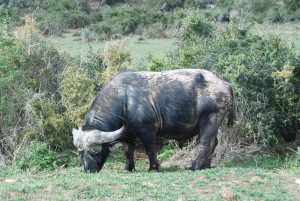Without detracting from the wonderful and critical role that our national parks play in conservation we would like to take an opportunity to focus on the positive achievements of the private sector in this regard.
 Around < the middle of the 20th century, wildlife had no economic value in South Africa. At best, wildlife was simply good sport and there are numerous accounts of the eradication of huge numbers of free-roaming wildlife throughout southern Africa.
Plains game species were seen to compete with livestock, so animals like Bontebok, Blesbok, Roan and Sable antelope and Tsessebe were also slaughtered to the point that their populations numbered less than 500 individuals. Wildlife was considered to be vermin.
In the late 1800s, the government established some statutory game reserves on land that was not suitable for agriculture and some 30 years later, we had some national parks, many of which still exist today and form the bulk of the country’s primary tourism destinations. Even these reserves only had limited wildlife populations and through exemplary conservation management strategies based on trial-and-error methods, these populations were protected and increased.
Around < the middle of the 20th century, wildlife had no economic value in South Africa. At best, wildlife was simply good sport and there are numerous accounts of the eradication of huge numbers of free-roaming wildlife throughout southern Africa.
Plains game species were seen to compete with livestock, so animals like Bontebok, Blesbok, Roan and Sable antelope and Tsessebe were also slaughtered to the point that their populations numbered less than 500 individuals. Wildlife was considered to be vermin.
In the late 1800s, the government established some statutory game reserves on land that was not suitable for agriculture and some 30 years later, we had some national parks, many of which still exist today and form the bulk of the country’s primary tourism destinations. Even these reserves only had limited wildlife populations and through exemplary conservation management strategies based on trial-and-error methods, these populations were protected and increased.
 Wildlife also started gaining economic value for private reserve owners and commercial wildlife ranching was recognised and supported by the state. These landowners focus on increasing natural habitats for wildlife and often convert agricultural land into suitable game areas. Their practises are sustainable and have a massive green footprint in terms of habitat, soil restoration and biodiversity support.
Wildlife also started gaining economic value for private reserve owners and commercial wildlife ranching was recognised and supported by the state. These landowners focus on increasing natural habitats for wildlife and often convert agricultural land into suitable game areas. Their practises are sustainable and have a massive green footprint in terms of habitat, soil restoration and biodiversity support.
The role of the private game ranching sector:
Social Aspects
• Wildlife ranches generally employ more than three times the staff of livestock farms
• Over 140 000 people have jobs (about 65 000 of which are permanent positions) in the private wildlife industry
• There are about 10 000 private game reserves in SA
Conservation
• There are over 20 million hectares of land in the conservation management industry – substantially more conservation land than all our national parks combined
• Private wildlife ranches generally focus on a select few of the game species on their land for commercial use but they provide habitat for countless species of mammals, birds, fish, insects and plants that are not used commercially at all. With habitat destruction being one of the primary threats to wildlife biodiversity, these private reserves play as critical a role in conservation as any national park, often providing vitally important corridors for wildlife between designated protected areas in areas that are becoming increasingly transformed by human activity.
 • According to statistics from Wildlife Ranching SA, on average, a single wildlife ranch of about 2700ha that focuses on eco-tourism and biodiversity support is home to 45 mammal species, 266 bird species, 43 reptile species, 29 grass species and over 100 other tree and plant species.
• According to statistics from Wildlife Ranching SA, on average, a single wildlife ranch of about 2700ha that focuses on eco-tourism and biodiversity support is home to 45 mammal species, 266 bird species, 43 reptile species, 29 grass species and over 100 other tree and plant species.
• Several species (Bontebok, Blesbok, Roan and Sable antelope, Tsessebe, Black wildebeest, Leopard tortoise) have been rescued from the brink of extinction thanks to the creation of these reserves and now have healthy and growing populations in the country. There were only a few hundred disease-free buffalo in the country in the late 1900s and buffalo were also facing threats of eradication due to diseases they are susceptible to. Thanks to the collaboration of national and private reserves and various breeding projects, there are now more than 36 000 disease-free buffalo in the country – yet another success story for conservation in SA.
Economic Aspects:
 • At present, the wildlife ranching industry, practicing both consumptive and non-consumptive uses of wildlife, contributes about R20 billion to SA’s balance sheet
• At present, the wildlife ranching industry, practicing both consumptive and non-consumptive uses of wildlife, contributes about R20 billion to SA’s balance sheet
• Approximately 20 000 tons of game meat is produced annually from this sector (excluding meat from biltong hunts), contributing to food security
• About 65 000 people are permanently employed by this sector with many more temporary jobs being provided throughout seasons or events eg. translocations/game capture operations, breeding projects, etc. These temporary positions push the total employment figure up to over 140 000 people that are supported by this industry, with a large proportion of employees made up of local community members.